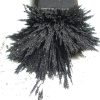Rare Earth Magnets: A Rundown
Rare earth magnets are a common feature in tons of household appliances. You’ve probably noticed that we carry them here at Apex Magnets in the form of our neodymium and samarium cobalt magnets. These permanent magnets sure sound fancy, but what sets them apart from other magnets? Let’s first dig into their history.
History of Rare Earth Magnets
Rare earth magnets were first developed in 1966 when scientists at the US Air Force Materials Laboratory discovered that YCo5, an alloy made of yttrium and cobalt, had the largest magnetic anisotropy (the directional dependence of a material's magnetic properties) of any material to-date. While the name “rare earth magnets” insinuates that these magnets are sparse and hard to find, they’re actually as abundant as tin or lead! However, the main source of these rare earth magnets is found in China, leading many countries to classify them as such.
How Are Rare Earth Magnets Made?
Once the raw material is mined, it is ground down into a fine powder and mixed to create products of different grades and different magnetic properties. It can be pressed into a form and then aligned using a large electromagnet. After the particles are aligned, the material is sintered to lock everything in place. Then, the material is further refined and cut down into smaller pieces. Once the final shape has been achieved, the magnets must be coated or plated to protect from corrosion. Finally, the magnets can be, well, magnetized! Rare earth magnets can only be magnetized in the direction they were set up for in the alignment phase.
What Makes Rare Magnets Better?
Because they’re created with different alloys, rare earth magnets have different qualities than other magnets like ceramic ones. The strength of these magnets also differs. Magnetic fields are measured using BHMax. For comparison, while ceramic magnets have a BHMax of 3.5, the strongest rare earth magnets have a strength of 40.
Magnets will also demagnetize at certain temperatures, which is known as the magnet’s Curie value. Ceramic magnets have a Curie temperature (CT) of 460 degrees Celsius and rare earth magnets have a CT closer to 750. This means that rare earth magnets are able to withstand much higher temperatures before being permanently demagnetized.
Both ceramic and SmCo magnets, the latter being a kind of rare earth magnet, are much more able to withstand corrosion. However, NdFeB magnets, another kind of rare earth magnet, are rather brittle and also very difficult to manufacture.
While rare earth magnets aren’t as magical as their name might suggest, they’re still incredibly powerful and useful magnets! We love learning more about the magnetic world around us and learning to appreciate these tools we use on a daily basis. To learn more magnetic news and to see handy DIY magnetic tutorials, be sure to follow along with our blog.

